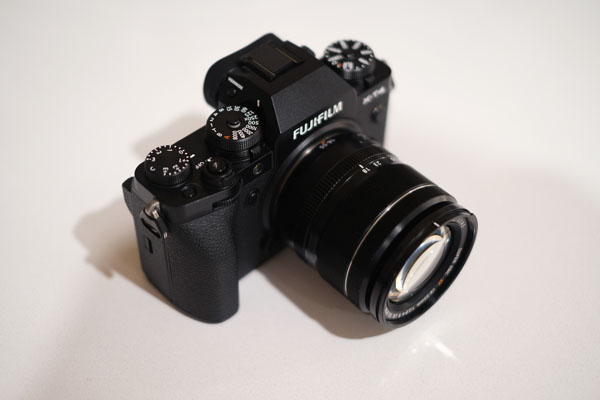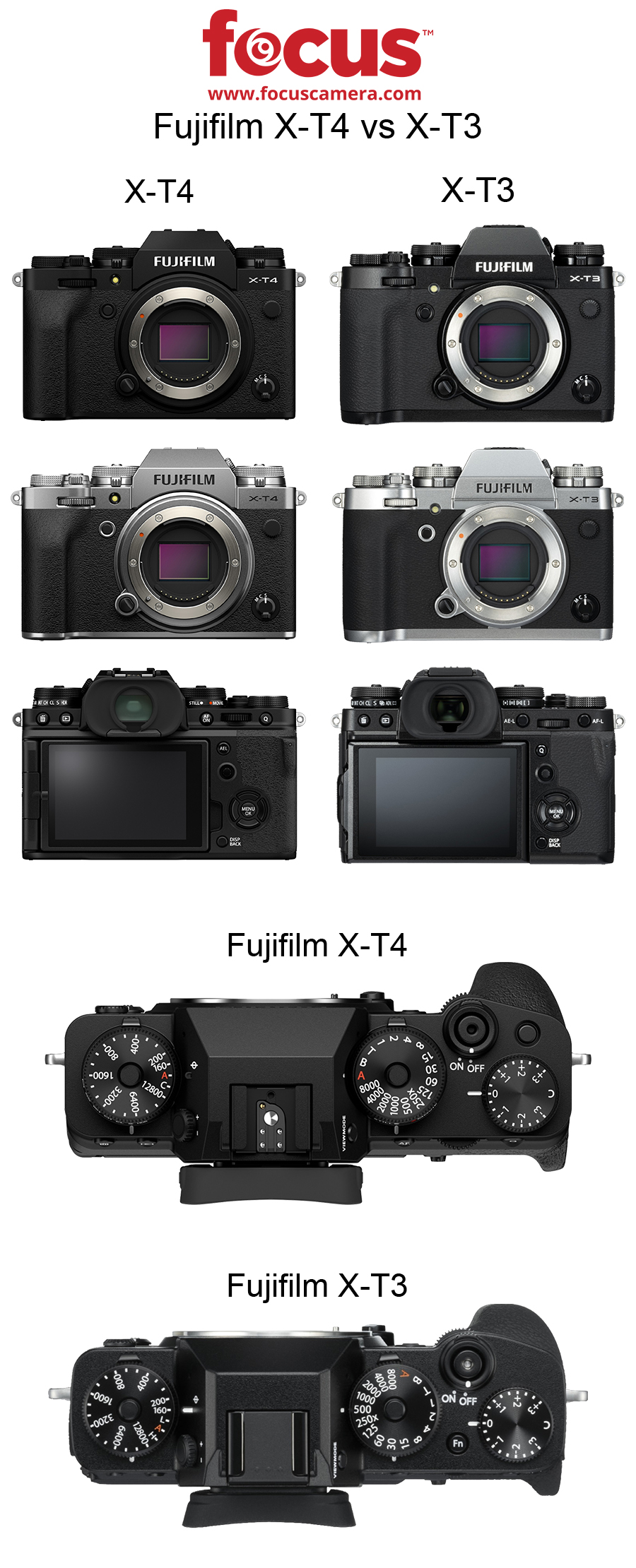Fujifilm’s much-anticipated X-T4 is officially available for pre-order. Its predecessor, the X-T3, gained popularity as a reliable, high-quality standby since its launch in September 2018. Today, we’re going to compare the Fujifilm X-T4 vs X-T3, highlight some important updates, and take a look at the UI changes.
| Fujifilm X-T3 | Fujifilm X-T4 | |
|---|---|---|
| Announcement Date | 9/2018 | 2/2020 |
| Sensor | 26.1MP X-Trans CMOS 4 | 26.1 MP X-Trans CMOS 4 |
| Mount | FUJIFILM X mount | FUJIFILM X mount |
| Weight | 539g | 607g |
| In-body Stabilization | No | 5-axis IBIS / up to 6.5 stops |
| Dimensions | 132.5mm x 92.8mm x 58.8mm | 134.6mm x 92.8mm x 63.8mm |
| FPS (Stills) | 11 fps | 15 fps |
| Video | 4K/60P | 4K/60P |
| Screen | 3.0 inch / 1.04 millions dots | 3.0 inch / 1.62 millions dots |
| Storage | SD memory card (-2GB) / SDHC memory card (-32GB) / SDXC memory card (-512GB) / UHS-I / UHS-II / Video Speed Class V90 | SD memory card (~2GB) / SDHC memory card (~32GB) / SDXC memory card (~512GB) / UHS-I / UHS-II / Video Speed Class V90 |
| Vari-angle Display | Yes | Yes |
| Touchscreen | Yes | Yes |
| Face / Eye detection AF | Yes | Yes |
| Bluetooth | Yes | Yes |
| Color Options | Black / Silver | Black / Silver |
In-body Stabilization
One of the biggest gaps the X-T3 has is its lack of in-body stabilization. The X-T4 remedies this with 5-axis in-body image stabilization (or IBIS) which provides an additional 6.5 stops. That addition, combined with another 4-stops of digital image stabilization, gives users more freedom for handheld stills and video.

Video
We live in a video-driven world and Fujifilm’s X-T4 is further evidence that camera manufacturers are trying to keep up with the demands of content creators. In addition to in-body stabilization, the X-T4 also records both pro-level DCI 4K/60p and Full HD/240p super slow-motion video. Plus, you can now record f-log footage in 10-bit color directly to the card.
In regard to recording time, the X-T4 and X-T3 are comparable. They both allow you to film full HD (2048 ×1080 or 920×1080) at 60 fps in 30-minute increments.

Autofocus
The X-T4 is all about versatility—the ability to seamlessly switch from stills to digital, being able to shoot on-the-go with in-body stabilization. That trend continues with this camera’s expanded autofocus. Its AF-C sensitivity reaches down to -6EV making it easier than ever to record in low-light situations. While we don’t necessarily endorse you running around in the dark taking photos, it’s nice to know you have the option.
Battery
Planning on shooting video? Well, then you also better plan on having additional battery power at your disposal. The X-T4 shoots 500 frames per charge in “normal” mode and about 85 minutes of 4K/30p video. Alternatively, the X-T3 only shoots 390 photos on a single charge. There’s also a newly designed vertical battery grip that uses two extra batteries that raises the stills count to 2,000 frames.














